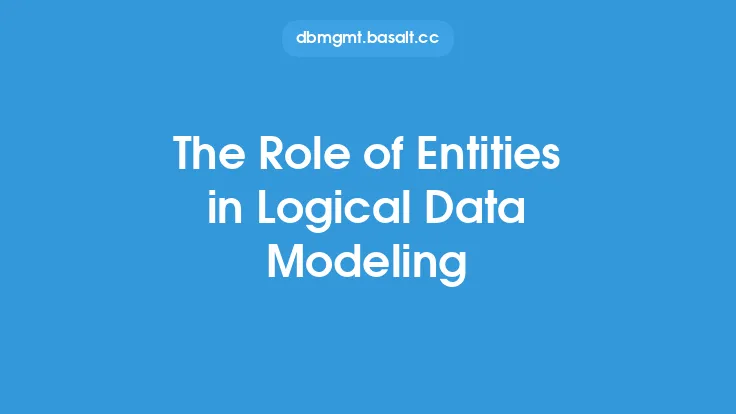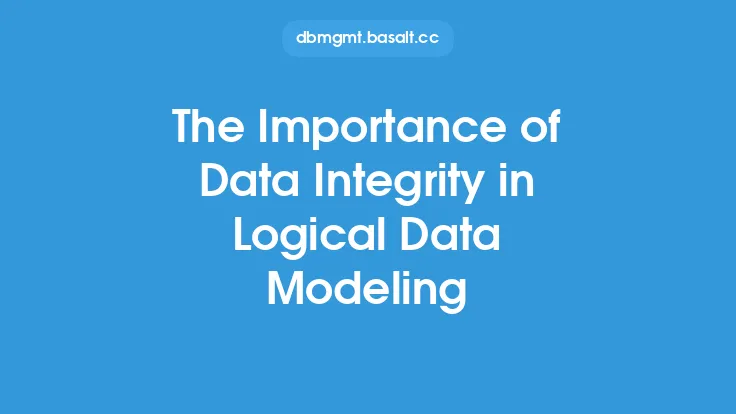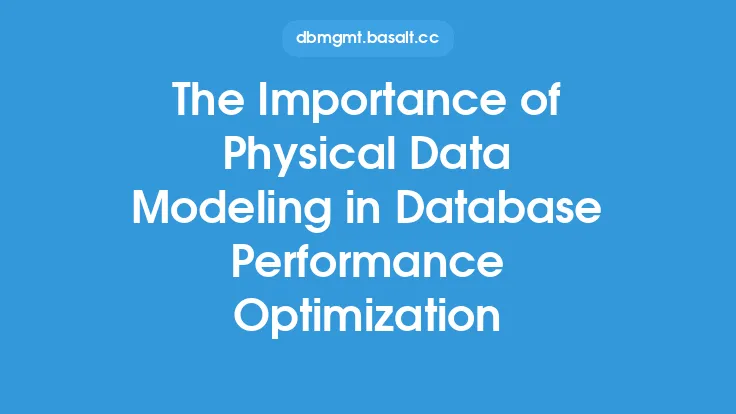Logical data modeling is a crucial step in the data modeling process, serving as a bridge between conceptual and physical data modeling. It involves creating a detailed, abstract representation of an organization's data, focusing on the logical structure and relationships between different data entities. This stage is essential for ensuring data consistency, reducing data redundancy, and improving data integrity.
Introduction to Logical Data Modeling
Logical data modeling is a process that involves transforming the conceptual data model into a more detailed and formal representation of the data. It is at this stage that the data modeler starts to think about the actual data structures that will be used to store the data, such as tables, columns, and relationships. The logical data model is often used as a communication tool between stakeholders, including business users, data analysts, and IT professionals, to ensure that everyone has a common understanding of the data and its relationships.
Key Components of a Logical Data Model
A logical data model typically consists of several key components, including entities, attributes, and relationships. Entities are the objects or concepts that are being modeled, such as customers, orders, or products. Attributes are the individual pieces of information that describe each entity, such as customer name, order date, or product price. Relationships, on the other hand, describe how the different entities interact with each other, such as a customer placing an order or a product being part of an order.
Data Modeling Notations and Techniques
There are several data modeling notations and techniques that can be used to create a logical data model, including Entity-Relationship Modeling (ERM), Object-Role Modeling (ORM), and Dimensional Modeling. ERM is one of the most widely used notations, which represents entities as rectangles, attributes as columns, and relationships as lines. ORM, on the other hand, uses a more graphical approach, representing entities as objects and relationships as roles. Dimensional modeling is often used in data warehousing and business intelligence applications, where it is used to create a simplified and optimized data structure for querying and analysis.
Benefits of Logical Data Modeling
Logical data modeling offers several benefits, including improved data consistency, reduced data redundancy, and enhanced data integrity. By creating a detailed and formal representation of the data, organizations can ensure that their data is accurate, complete, and consistent across different systems and applications. Logical data modeling also helps to identify data relationships and dependencies, which can be critical in ensuring data integrity and preventing data inconsistencies.
Challenges and Considerations
Despite its benefits, logical data modeling can be a complex and challenging process, requiring significant time and effort. One of the main challenges is ensuring that the logical data model is aligned with the business requirements and stakeholders' expectations. Additionally, logical data modeling requires a deep understanding of the data and its relationships, as well as the ability to communicate complex technical concepts to non-technical stakeholders. Furthermore, logical data modeling must also consider issues such as data security, data governance, and data compliance, which can add an extra layer of complexity to the process.
Tools and Technologies
There are several tools and technologies that can be used to support logical data modeling, including data modeling software, database management systems, and data integration tools. Data modeling software, such as ER/Studio or PowerDesigner, provides a graphical interface for creating and editing logical data models, as well as features such as data validation and data transformation. Database management systems, such as Oracle or SQL Server, provide a platform for implementing the logical data model, while data integration tools, such as Informatica or Talend, enable organizations to integrate data from different sources and systems.
Best Practices
To ensure the success of logical data modeling, several best practices should be followed, including involving stakeholders in the data modeling process, using a standardized data modeling notation, and continuously validating and refining the logical data model. Additionally, data modelers should ensure that the logical data model is aligned with the business requirements and stakeholders' expectations, and that it is flexible enough to accommodate changing business needs and requirements. Finally, data modelers should also consider issues such as data security, data governance, and data compliance, and ensure that the logical data model is designed with these considerations in mind.
Conclusion
Logical data modeling is a critical step in the data modeling process, providing a detailed and formal representation of an organization's data. By creating a logical data model, organizations can ensure data consistency, reduce data redundancy, and improve data integrity. While logical data modeling can be a complex and challenging process, it is essential for ensuring that an organization's data is accurate, complete, and consistent across different systems and applications. By following best practices and using the right tools and technologies, organizations can create a high-quality logical data model that meets their business needs and requirements.





